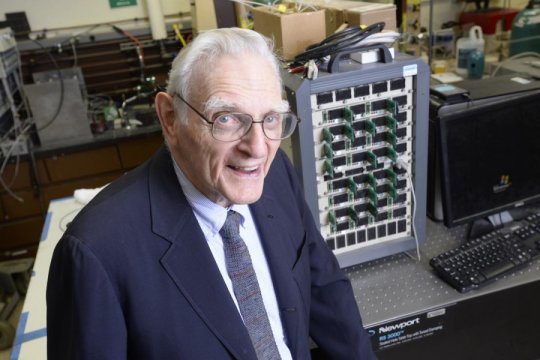Goodenough’s present breakthrough, completed with Cockrell School senior study fellow Maria Helena Braga, is a cost-effective all-solid-state battery that is non-combustible and possesses a long battery life with a high volumetric energy density and fast rates of discharge and charge. “Safety, cost, rates of charge, energy density and discharge and cycle life are crucial for battery driven cars to be more extensively adopted. We consider our discovery solves numerous problems that are inherent in present’s batteries,”says Goodenough.
The scientists illustrated that their novel battery cells have at least three times as much energy density as today’s lithium-ion batteries. A battery cell’s energy density gives an electronic automobile its driving range, so bigger energy density implies that a car can drive more miles between charges. The UT Austin battery method also enables for a bigger number of charging and discharging cycles that equates to longer-lasting batteries, as well as a faster rate of recharge.
Today’s lithium-ion batteries employ liquid electrolytes to transport the lithium ions between the anode and the cathode. If a battery cell is charged too quickly, it can result in dendrites or metal whiskers to prepare and cross through the liquid electrolytes, resulting in a short circuit that can lead to fires and explosions. Rather than liquid electrolytes, the scientists depend on glass electrolytes that allow the use of an alkali-metal anode without the formation of dendrites.

The use of an alkali-metal anode, which is not feasible with traditional batteries, enhances the energy density of a cathode and delivers a long cycle life. In studies, the scientist’s cells have illustrated more than 1,200 cycles with low cell resistance. Moreover, since the solid-glass electrolytes can function, or have great conductivity at -20 degree Celsius, this sort of battery in a car could perform well in subzero degree weather. This is the first all-solid state battery cell that can function below 60 Degree Celsius.
The engineer’s glass electrolytes enable them to strip and plate the alkali metals on both the anode and cathode side without dendrites, which simplifies battery cell fabrication. Another benefit is that the battery cells can be prepared from eco-friendly substances.
Filed Under: News


Questions related to this article?
👉Ask and discuss on Electro-Tech-Online.com and EDAboard.com forums.
Tell Us What You Think!!
You must be logged in to post a comment.